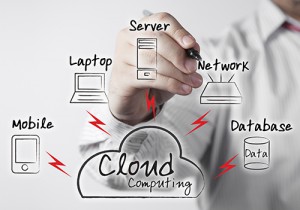 A recent article in my local paper showcased a new solar powered phone charger and wi-fi hotspot built into a park bench. Apparently these are coming to cities such as Boston and New York, but they are already in a park in my own town. This got me thinking about the ubiquity of wireless connections and the expectations that there should be access almost everywhere. Vehicles are becoming personal internet access points, and I suspect that I could even turn my bicycle into a hot spot. With this expectation of widespread and growing wireless access, how is a network architect supposed to plan for the future? In this post I hope to synthesize best practices of corporate and campus planners to help you plan your own infrastructure.
A recent article in my local paper showcased a new solar powered phone charger and wi-fi hotspot built into a park bench. Apparently these are coming to cities such as Boston and New York, but they are already in a park in my own town. This got me thinking about the ubiquity of wireless connections and the expectations that there should be access almost everywhere. Vehicles are becoming personal internet access points, and I suspect that I could even turn my bicycle into a hot spot. With this expectation of widespread and growing wireless access, how is a network architect supposed to plan for the future? In this post I hope to synthesize best practices of corporate and campus planners to help you plan your own infrastructure.
Greenfield or Incremental?
Unless you are moving into a brand new building you don’t have the luxury of the greenfield approach, or starting from scratch. The folks at Cisco and other network component providers recommend developing a master plan and then tackling the project in stages. A wireless network consists of routers and switches in the back end and access points at the front end. If you have not been performing periodic upgrades then the entire infrastructure may need to be replaced.
When replacing the system components, look to the future in terms of technology and capacity. There is still a lot of equipment running on the old 802.11b/g standard but 802.11n is a better solution. Even better is 802.11ac but there are not many current devices that can access this standard, although they are coming fast. When developing a plan, look out at least five years to estimate the wireless devices that will be accessing your network. Don’t forget about bring your own devices (BYOD) and Internet of Things (IoT) introducing devices that we may not even have thought of yet.
Appetite for Bandwidth
A December 2015 Educause survey found that 61% of undergraduates in a typical college or university are trying to connect at least two wireless devices to the network at the same time. Some are trying to connect up to four devices at once. University of Oregon enrolled 23,634 students for fall 2016 so using the average of two devices, that is over 47,000 devices potentially hitting the network. That is a lot of access points and switches that need to be working right. Particularly for colleges, but also for businesses, it is important to have the right mix of access, speed, and reliability.
In the article mentioned above, Michael Spande, director of Enterprise Services at Bethel University, says “People pick their colleges based on factors like how good the wireless network is. They share their experiences online, and we can either look good or have a big black eye.” Quality wireless access has become a competitive differentiator.
Refresh, Refresh, Refresh
Whether you are managing a university, corporate, or hospital network, it is important to keep refreshing the hardware and software to ensure high performance. It is hard to predict what the future will hold, so network architects need to be part seers and part engineers. Just like PCs, the technology changes so quickly that a planned refresh cycle is critical to keep up with demand and with newer devices trying to access the network. Some recommend replacing one-quarter of the components every year while others stretch that out to a five-to-six-year refresh cycle. It depends a lot on demand and requirements of the devices accessing the network.
Thoughts
I remember when we installed the first wireless access points, they truly were a novelty. We targeted conference rooms because all of the offices were already hard-wired so wi-fi in those areas would have been redundant. Times have changed and wireless access is the future. Whether sitting on a park bench or in a restaurant, or playing golf on the front nine, our “always on” society is quickly adjusting to internet access anytime, anywhere. Are you ready?
Kelly Brown is an IT professional and assistant professor of practice for the UO Applied Information Management Master’s Degree Program. He writes about IT and business topics that keep him up at night.





